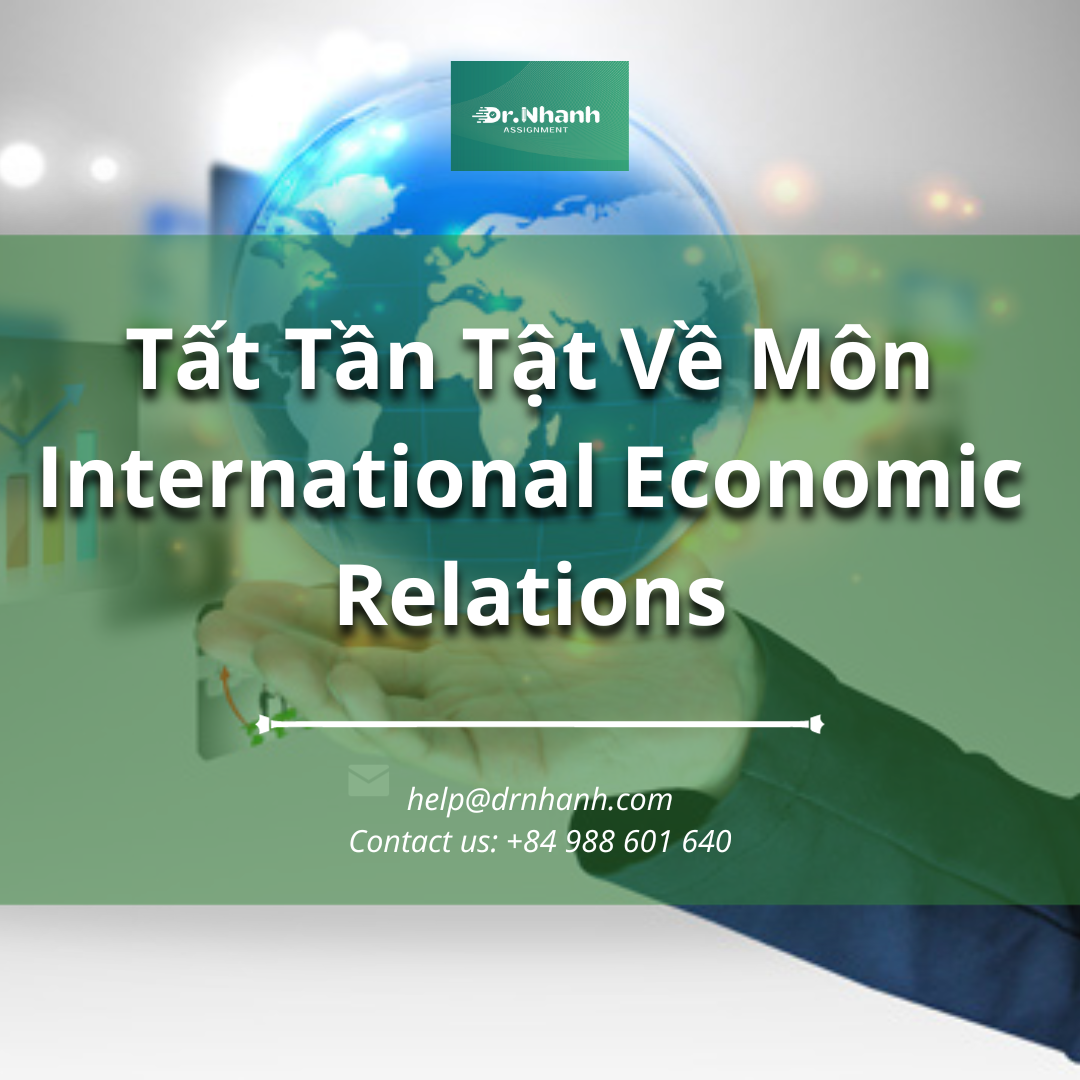Accounting for Social-Environmental Issue
CHAPTER 1 INTRODUCTION
Accounting literature in the 1950s of the 20th century witnessed a new path of bookkeeping theory. During this period, accounting practice has been developed to cover inclusive elements instead of just numbers and budgetary reports. Corporate administration system was the main component that was included in that reform, following with different prerequisites of chiefs’ duty on budgetary reports are significant changes that generously improve and guarantee partners’ privileges and advantages. In any case, the expression “Stakeholder” covers a lot more modest degrees contrasting with the current circumstance. Globalization and the presence of worldwide organizations extend the past importance of partners to cover not just destinations imparting common budgetary advantages to ventures, yet additionally, new intelligent plans and approaches. This assignment is an endeavor to investigate potential connections between improvement of bookkeeping practice and economical turn of events.
1.1 Research gap
It is not until recently that scholars in accounting practices raised voice on the social and environmental issues (Bebbington, Russell and Thomson, 2017). The birth of social-environment accounting has rooted in accounting theories since 1910s, nonetheless, the original version was developed to cope with a much smaller scope that it is today. In the following decades, apparent effects of climate change, thereby, quickly escalate and expand those theories. However, lack of clear definition and measures of social-environmental indicators struggled researchers and induced aggressive dispute among scholars (Gray, 2002). That situation, thereby, led to a poor accounting practice of social-environmental and related issues during this period (Gray and Laughlin, 2012). Moreover, Bebbington, Russell and Thomson (2017) suggest that most literature writing about social-environment issues retrieves data from external sources, which contain subjective information, they argue. Indeed, as Thomson (2011) noted, those public data often is the organization’s attempts to disclose its intended information regarding sustainable development. Wackernagel et al. (2001) contend that this circumstance might lead to misperceptions of the public in which readers of those reports consider voluntarily disclosed information of organizations as objective judgments of the agendas in charge. Studies of Bebbington (2009), and Bebbington, Russell, and Thomson (2017) show evidence that companies’ publish and auditors’ disclosure regarding social-environmental issues establish huge dissimilarities. Barman and Farrar (2018) affirm their results, however, those initial efforts should be noted as positive manners of organizations and scholars toward this stream of research.
In summary, despite of the fact that scholars once have long dispute on the topic of accounting for social and environmental matters, yet, lack of clear definition and indicators thereby drive this stream of research to shrink into oblivion. Until recently, rising complexity in the global economy obsoletes the traditional accounting method. Current complex business condition, combining with apparent impacts of climate change forces the accounting techniques updating to better reflect the business impacts on the social-environment matter. Under this manner, the author’s purpose is to investigate the topic of accounting for social-environmental matters in details.
1.2 Research objective
This research is to identify, assess and evaluate major accounting methods that account for social-environmental issues and related matter. Analyzing and comparing those methods, thereby, expect to derive the most appropriate accounting technique that best demonstrates the impacts of business to society and ecology. Three research questions below are hoped to fulfill this research objective:
- What are the accounting for social and environmental matters?
- What should accountant do to improve current implication of social-environmental accounting?
- To what extent that different stakeholders support the use of social-environmental accounting?
This research comprised of three sections. The following section provides a review of the literature on accounting for social, environmental and related factors. In the 1990s, accounting for the environment was considered a critical aspect of accounting, nonetheless, this stream of research has been elapsed since scholars are leaning on theoretical development and management problems. This connection should be revised as the first step to regain the prevalence of social-environmental accounting. Also, a brief of three basic measuring techniques will be included in this section. Those methods will be compared and contrast to derive the pros and cons of each. Research method, research design, and necessary data will be presented in chapter three. Moreover, the relevance of research method to this topic is also discussed in this section.
CHAPTER 2 LITERATURE REVIEW
2.1 The development of social-environmental accounting
Academic researchers share mutual agreement on the root of environmental accounting, in which it arose from accounting for social matters (Gray and Laughlin, 2012). At first, this stream of research received insignificant attention from both academics and practice. Until the 1980s, the attitude of the government toward the environmental impacts of business dramatically changed the situation. Climate changes quickly accelerate and its consequences appear to be more and more adverse. The public blames companies and corporations in which they were over greedy and irresponsible. This circumstance, thereby, forced the government to improve the legal framework toward directions that emphasizes more on environmental and social accounting practices (Mousa, Desoky and Khan, 2018). Changing in legal framework thus regained the preference of social and environmental accounting. According to Bebbington, Russell, and Thomson (2017), researchers during this period, still, restricted themselves in disclosing and evaluating the impacts of environmental and social issue on business operations, which should be inversed This situation continues until the presence of the Brundtland Report. This document was among the first and the most comprehensive report so far which describe in full the adverse impacts of human on environmental, ecological and social subjects. This report, thereby, encourages scholars to venture their preference on accounting for social-environmental matters (Keeble, 1988).
Though the Brundtland report has recalled scholar’s preference for social-environment issues, still, corporate-oriented studies were the dominant direction in this area. As noted by Gray and Laughlin (2012), the restriction of data is a major reason underlying the ineffectiveness of researches during this period. They contend that the information which researchers obtained often comes from voluntary disclosure of enterprise’s sources. This dependence questions the objective, and therefore, the integrity of those studies. Czarniawska (2011) refers to those scholars as sociology preparers, who have a subjective perspective regarding social and environmental issues. Milne (2013) criticizes those researcher’s results as simply decoupled from organization actions, thus it could not objectively reflect the impacts of enterprises to society and ecology. Additionally, managers of the company struggle to translate measures and indicators of social-environmental accounting into the company’s language as there were no inclusive guidelines or definitions. Noticeably, scholars show little effort to adjust this problem, thereby, leaving it is unadjusted and demotivates enterprises from understanding and responsibly applying the social-environment accounting(Gray, 2002).
2.2 Accounting techniques for social-environmental issues
This section offers a review of literature regarding three prevalent accounting techniques that are consider as suitable methods to account for social-environmental matters.
2.2.1 Cost benefit analysis as initial attempts
The first and official technique that takes into account the cost of non-physical elements in evaluating a project is Costs and Benefits Analysis. Robinson (2009) contends that the CBA technique comprehend the decision making process of the authorities by offering with objective data, thus increase transparency and improve the creditability of the process. Moreover, the application of CBA significantly reduces the group interest, thereby, both political, academic and professional users praise it with as an effective application (Ackerman and Heinzerling, 2002; Bebbington, Brown and Frame, 2007; David, 2014). Nonetheless, there is a branch of scholars criticizes CBA for its monetization process. They argue that sacred things that define mankind are treated in a mundane manner; and the CBA trivializes human value (Ackerman and Heinzerling, 2002). Other critics of CBA stem from its procedure. Vike (2007) suggests that many users of CBA complain about the process of translating non-economic value into an accounting number; they sometimes find that the process is dehumanizing and devalue them. Moreover, Bangser (1982) contends there are difficulties in transferring intangible assets into a dollar value. Any attempt to do so tends to yield incommensurable value and will produce significant errors in the application of CBA.
Additionally, as Kaplan et al. (2016) noted, the CBA inherits a major merit of the classical economic, and this root renders the overall effectiveness of the technique. The CBA assumes that human is rational in giving actions, nonetheless, it is often not the case. Another issue of CBA is it subject to user’s judgments. As noted by Bebbington, Brown and Frame (2007), implications of CBA often encounter the needs of measuring and valuing impacts of the project on society, human and ecology, which are hardly and tend to be subjectively measuring in any circumstance. In such events, experts’ comments are required; thereby, rising costs and delaying the process (David, 2014). Furthermore, there is indeed the presence of political interest in the application of CBA regardless of attempts to be objective off political pressure. Under political pressures, the application of CBA might yield subjective decisions on a specific side. For example, users of CBA can choose an approach or method of costs/benefits allocation to benefit one particular group of interest (Kaplan et al., 2016). In short, despite being the first technique ventures on measuring intangible value of a project, the CBA still lack of essential elements that describe the social-environmental accounting in full.
2.2.2 The raise of Full-cost accounting method
Full cost accounting (FCA) is an alternative of CBA in determining non-economic value. This method was first developed as an attempt by accounting professionals to better cope with the sustainable development goals (Jasinski, Meredith and Kirwan, 2015). Full cost accounting is superior to the CBA in terms of more effectively capturing economic value, thus make it become the most appropriate technique account for social-environment matters so far (David, 2014). More to the point, the four steps framework of FCA, which are (i) defining scope of the project, (ii) establishing boundaries, (iii) quantifying physical flows, and (iv) translating intangible value into a money value, expose impacts of business on social-environment elements in deeper manner comparing to the CBA (Jasinski, Meredith and Kirwan, 2015). Yet, the implications of FCA in practice is still restricted because there are difficulties in some aspects. One problem arises from incompatible goals of social-environmental protection and organization’s purposes. The accountant finds it difficult, sometimes impossible, to soundly cooperate the social-environment matter with the development of the firms; this renders the quality of FCA. To achieve the overarching and ambitious ideas of social-environmental accounting, it requires the voluntary unity of the organization (Robinson, 2009). Nonetheless, it is often not the case that companies voluntarily seek to a mitigation of social-environment issues and personal aims, thereby, this renders the performance of FCA (Bebbington, 2009).
2.2.3 The potential of Sustainable assessment modeling
The sustainable assessment modeling (SAM), according to Gray and Laughlin (2012), is the newest attempt to fill in the shortages of CBA and FCA, and to offer a better framework for the accounting of social and environment matter. Application of this technique in energy, mining and forestry project has gained remarkable success. This model updates the current framework of FCA in which the SAM method offers clear and transparent classifications of human impacts on externalities (Bebbington, Brown and Frame, 2007). Especially, the SAM model categorizes human impacts on the ecology into three classes: (i) Human impacts on natural resources, (ii) Human impacts on environmental ecology, and (iii) Human impacts society (Wackernagel et al., 2001). Moreover, the SAM is superior to the previous models in which it encompasses not only the costs of project, but also measurements of positive impacts on social and environmental matters. However, in measuring those impacts, both positive and negative, the SAM requires significant adjustments, thereby, it encounters similar shortages of FCA and CBA. In addition, different components of SAM can be revalued and categorized from one category to another according to the nature of projects, as many supporters of this technique argue. Nonetheless, abuse of this flexibility might create significant difficulty for users (Cavanagh, Frame and Lennox, 2006; Jerneck et al., 2011).
CHAPTER 3 Research design and method
3.1 Research design
The primary objective of this assignment is to identify, assess, and evaluate major accounting methods that account for social-environmental issues and related matters. Analyzing and comparing those methods, thereby, expect to derive the most appropriate accounting technique that best demonstrates the impacts of business on society and ecology. A questionnaire survey is used to investigate the opinions of each stakeholder group toward accounting for social-environmental matter and related issues. The survey is designed based on the analytical framework below.

Figure 3‑1: Conceptual framework
3.2 Research method
As the primary objective of this research is to disclose stakeholder’s perspectives on social-environmental accounting, the first step of the survey is to classify respondent into three groups (i) directors, managers and accountants of the companies, (ii) outsider investors, and (iii) accounting professional (student, experts, and auditor). The questionnaire then continues with numbers of questions in relation to different accounting techniques and its capability. Question is scaled using the five-point Likert to indicate the significant level of particular items. The five-point Likert begins ranges from 1 (“strongly disagree”) to 5 (“strongly agree”). After all, responses were collected and cleaned, the Analysis of Covariance (ANOVA) is then applied. The primary objective of the research is to signal the differences between stakeholders of the organization toward accounting techniques for the social-environmental issues. Therefore, ANOVA is a suitable method in which it emphasizes and confirms the statistical difference among groups.
3.3 Expected results
The author expects that three groups will have different agreements toward each accounting technique due to different perspectives and benefits. The results drawing from the application of ANOVA will signify and confirm differences among the three groups. Though CBA and FCA models obtain numbers of critic from scholars, nonetheless, the author believes that other stakeholders will have different opinions. Additionally, the author expects that combination of survey and ANOVA method will point to the best technique to be applied.


 English
English






